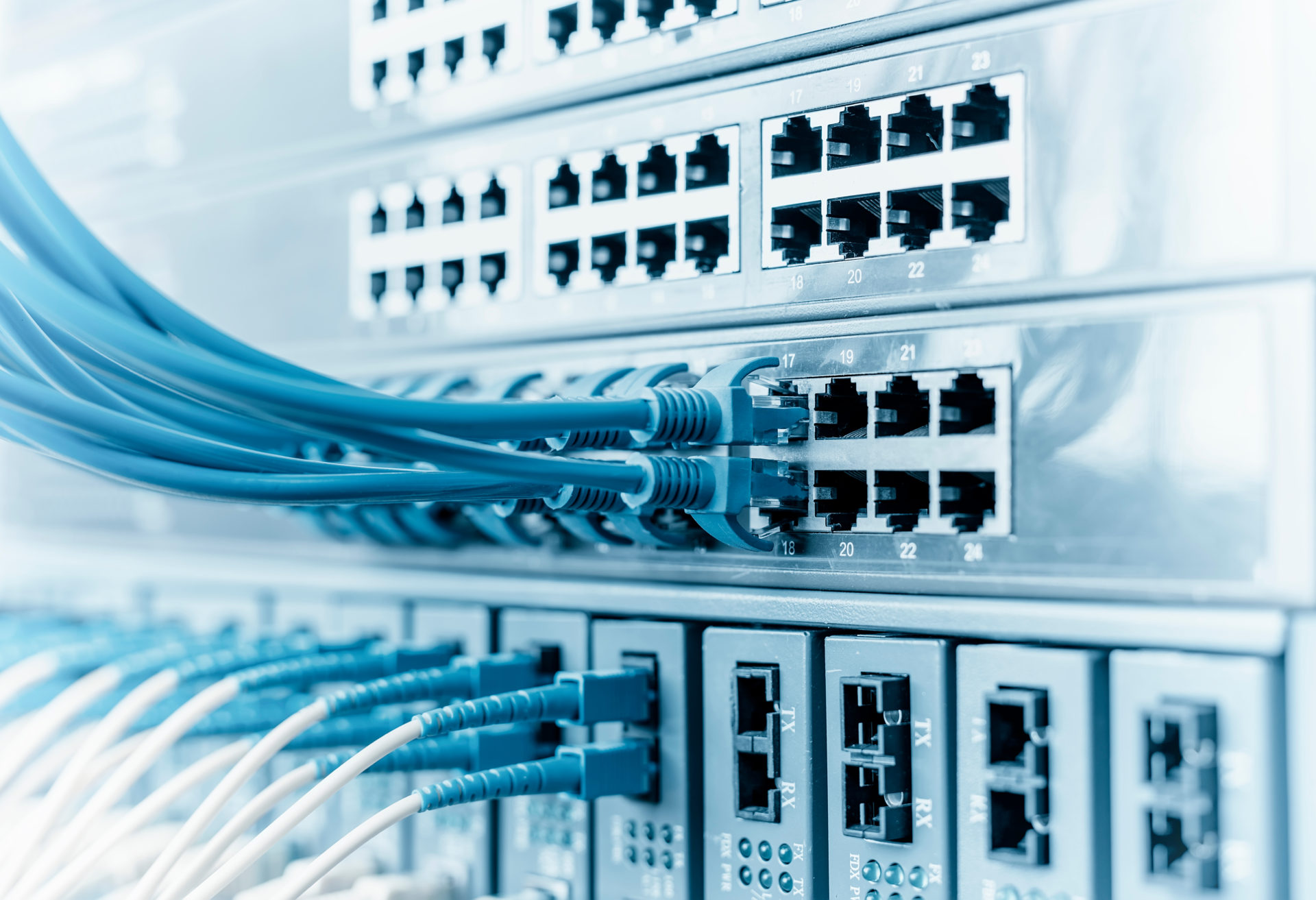TELECOMMUNICATIONS NETWORKS ARE A TYPE OF SOFTWARE AND HARDWARE ARCHITECTURE THAT ALLOWS DATA TO BE TRANSFERRED BETWEEN DIFFERENT LOGICAL UNITS IN A STRUCTURED MANNER
Information technology and telecommunications are the pillars on which the digital communication society rests.
A telecommunications network is a set of devices and their connections (physical or logical) that enable the transmission and reception of information of any kind between two or more users located in distinct geographical positions, transferring it via cables, radio systems or other electromagnetic or optical systems.
Within a network, each transceiver is uniquely distinguishable by a network address, which allows information to be routed to and from the correct recipients. The network address can be expressed in various formats depending on the type and role of the device, e.g. a telephone number, an IP address, a MAC address and so on.
Network devices may be either terminal elements, used directly by end users (e.g. a telephone set or a computer connected to the Internet) or transport elements, not directly accessible to end users, whose function is to enable the proper transfer of information between recipients.
The network links between devices, through which the exchange of information takes place, can in turn be either physical (e.g. the pair of copper wires connecting a telephone to the nearest exchange; an optical fibre connecting two transmission devices; the transmission carrier of a radio link) or logical (e.g. the equivalent circuit directly connecting any two devices in the network, abstracted from the complexity and mode of the physical links actually used to realise it).
The correct transfer of information is ensured by means of specific functionalities (network functionalities) such as signalling (for the start and end of the information exchange), switching (for routing between end users), transmission (for the physical transfer of the signal), and management (for checking the correctness of the exchange and for the optimal use of network resources).
Examples of telecommunications networks are:
- telephone and telematic networks
- computer networks
- Internet
Whatever the application, database, ICT or Telco services and solutions, the network infrastructure must be reliable, monitored and appropriately dimensioned.
Optimal management of the IP network enables improved business productivity, increased user satisfaction and guaranteed access to business systems at all times. SCAI Connect offers companies the skills and experience gained in the management of IP infrastructures and networks and is conceived as a project that grows and evolves around high-profile employees and network experts, characterising its offer by flexibility and breadth of services to meet the connectivity and security needs of companies.
By supporting companies in designing architectures, IP infrastructures, teams and roles SCAI Connect provides concrete answers to companies’ connectivity needs.
The experience gained in the management and control of IP networks has given rise to a number of application solutions to support operations, including Ne.Mo, an IP network performance monitoring tool, NE.DI, a tool for automatic software distribution and control of hardware and software resources of corporate LANs, and WebSite BlackListing, a solution that allows service providers and corporate network administrators to block traffic to blacklisted websites.
